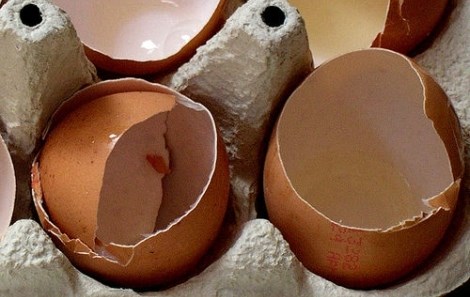Scientists Say Egg Shells Remove Hex Chrome from Water
Scientists in China have developed an absorbent material made from waste eggshell membrane that can remove hexavalent chromium from contaminated water.
#pollutioncontrol

Featured Content
Scientists in China have developed an absorbent material made from waste eggshell membrane that can remove hexavalent chromium from contaminated water.
Current methods for removal include reduction, ion exchange and absorption. Biosorption is a type of absorption that uses a material that is not man-made, usually some kind of waste material. But scientists Yuming Huang and Bin Liu from Southwest University, Chongqing, have designed a new biosorbent using eggshells.
“As the by-product of food processing and manufacturing plants,eggshells represent a significant waste because they are traditionally useless after the production of eggs and egg derivatives,” says Huang. “Using this waste to produce useful biomaterial for removal of Cr6 from water may be a good choice and opens up a pathway to using biowaste to treat toxic metals from water.'
Most biosorbents contain amine groups that remove the heavy metals through chelating cationic metal ions and/or absorbing anionic metal species. Eggshell membrane contains many surface functional groups, including amines, amides and carboxylic groups. The team modified ESM with polyethyleneimine, which has known metal chelation properties, and they tested the resulting bioabsorbent for its ability to remove Cr6 from water. Huang found that not only did it remove Cr6 but it also reduced some of the Cr6 to Cr3, suggesting that PEI-ESM can also detoxify Cr(VI).
"An increasingly diverse range of waste and natural materials have been shown to function as biosorbents for the decontamination of metal bearing waters," says Stuart Gibb from the Environmental Research Institute of The University of the Highlands and Islands, Thurso, UK. Gibb says that there are some issues that need to be addressed, but he feels the work shows promise. "The PEI functionalisation of waste eggshell membrane produces a modified biosorbent of significant novelty and interest."
RELATED CONTENT
-
Cleaning Magnesium
Question: What is the recommended chemical cleaning process and composition prior to electroless nickel plating for magnesium?
-
Cyanide Destruction: A New Look at an Age-Old Problem
Cyanide in mining and industrial wastewaters has been around from the beginning, including electroplating processes. This presentation reviews a number of current processes, and in particular, offers new technologies for improvement in cyanide destruction by the most common process, using sodium hypochlorite.
-
Is Your Electroplating Waste Hazardous?
Some that bears precious metals is, and there are a host of regulations to consider when recycling.


















